Complexes of morning exercises in the second junior group. The goal of gymnastics in the 2nd junior group
The benefits of morning exercises are undeniable and proven by doctors all over the world. That is why the habit of carrying out such a daily procedure begins from a very young age. Gymnastics in a preschool institution is of particular importance. Indeed, it is at this age that babies are able to master the proposed exercises, directly actively participate in the process. According to the preschool education program and the accepted standard, preschoolers master different types of gymnastics. Including morning, physical minutes during classes and after naps. As well as narrowly focused industries: articulatory, respiratory and finger gymnastics. In each age group of kindergarten there are certain features, standards and recommendations for carrying out this type of activity. We will consider in detail information on what complexes of morning exercises are used in the second junior group, as well as other types of warm-ups for this age, in this article.
Why do you need gymnastics in kindergarten?
The body of a preschooler overcomes serious physiological changes in the process of growing up. In the presence of negative external factors, various diseases often occur, for example, curvature of posture, improper positioning of the foot, visual impairment and a general decrease in immunity. Such consequences are caused by violations of the daily regimen, a lack of vitamins and other useful substances due to the poor quality of food consumed by the child, an unfavorable environmental situation, wearing uncomfortable shoes and poor-quality clothing, lack of physical activity, prolonged TV viewing and the use of various gadgets, and much more. ...
Morning exercises in the second junior group, or, as it is popularly called, exercise, is an effective preventive measure that helps to maintain and strengthen the health of the growing body. Thanks to regular sports activities, the morbidity rate of preschoolers is significantly reduced, the indicators of their motor and intellectual activity improve. In addition, gymnastics in kindergarten is a regime moment that contributes to discipline, ordering the daily activities of children, the formation of endurance, will and, as a result, is reflected in the character traits and adaptation of the baby in society.
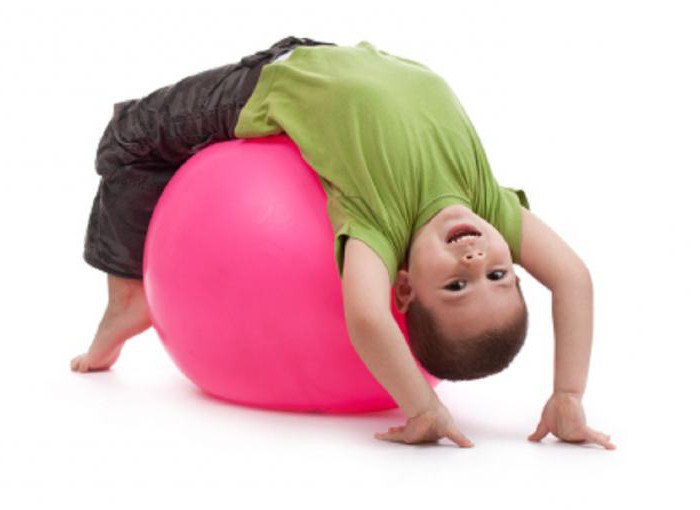
Among other things, morning gymnastics complexes in the second junior group of the kindergarten contribute to teaching kids collective games, interacting with each other, and also simply raise their mood and motivate children to attend kindergarten.
What is it for?
The goal of morning exercises in the second junior group of kindergarten is as follows:
- development of basic (specified in the program for a preschool institution) physical abilities and skills;
- general strengthening and hardening of the body of children;
- organization of the daily routine and discipline of pupils;
- development of zeal, will, concentration, attention and other psycho-emotional components in babies;
- team building and strengthening;
- increasing the motivation of children to attend the kindergarten.
How does charging affect the child's body:
- increased blood circulation and metabolism, which leads to the saturation of cells with oxygen and, as a result, to the health of the body;
- large and fine motor skills develop, movements are improved and complicated;
- muscle corset develops;
- the musculoskeletal system is formed correctly;
- immunity is activated;
- hardening of the body occurs;
- the respiratory organs are trained;
- the tone of the body rises;
- as a result of saturation of the brain with oxygen, intellectual activity improves.
What does the morning gymnastics complex consist of?
In order for invigorating gymnastics in the second junior group (as in any other age category) to be effective, and to fulfill the set goals, it is necessary to formulate a complete set of exercises methodologically and pedagogically correctly.
Morning exercises consist of the following structural components:
- Warm up... This introductory stage is aimed at preparing the child's body for the perception of further, more complex physical exercises, and also aims at attracting children's attention and setting the direction for the subsequent lesson. At this stage, building exercises are carried out in various ways, walking (for example, on toes, heels or on the inner arch of the foot), slow running. The warm-up takes 1-2 minutes.
- The main part includes general developmental exercises listed in the educational program. Taking into account the physiological development of children, the exercises should be carried out in the following sequence: shoulder girdle, torso, legs, feet. Most of the morning exercises take about 5 minutes.
- The final stage consists of jumping and running, after which it is recommended to walk or sedentary games in order to restore the pulse and breathing. This stage lasts up to 2 minutes.
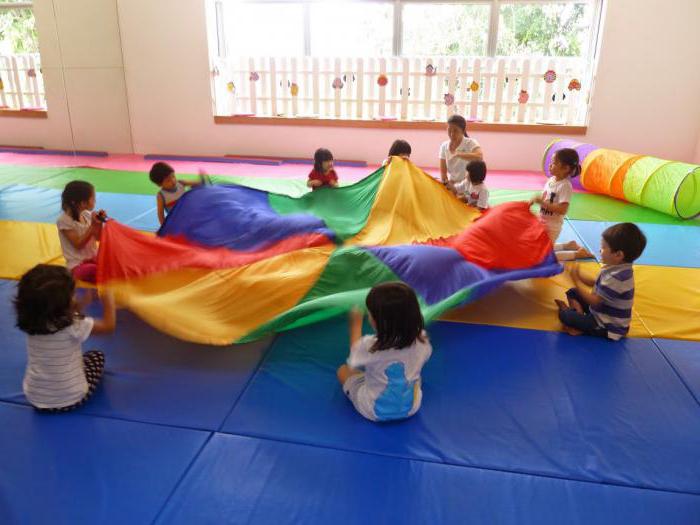
Morning exercises in the second junior group should consist only of those exercises that the children have fixed in physical culture classes, since the short duration of the procedure does not provide for the study of new material, the development of unfamiliar movements. The purpose of morning exercises is not to teach, but to consolidate the skills known to children, to form a healthy lifestyle.
Carrying out options
First of all, it should be noted that the morning gymnastics complexes in the second junior group must be carried out in a playful way. So, you can come up with a specific topic. For example, the exercise can be called "At the Bear in the Forest". Educators offer kids to play with a well-known poem by performing different types of walking, bending, squatting.
Morning exercises in the younger group of the kindergarten are much more effective and fun when using rhymes, sports equipment, outdoor games, competitions and even theatrical action.
Types of morning exercises
The methodology distinguishes between the following types of morning exercises in a preschool institution:
- The traditional version involves conducting a structured lesson based on general developmental exercises.
- The game form is carried out in the form of various outdoor games, competitions, tasks.
- The plot type of morning gymnastics involves playing out any situational line, for example, "Children in the Woods", "In the Meadow", "Funny Animals" and others.
- Rhythmic gymnastics is carried out with musical accompaniment, using children's musical instruments (for example, a tambourine) or beating the beat with claps, walking, etc. In such classes, dance elements are used, you can organize a round dance.
- With the use of children's exercise equipment and sports equipment.
Such classes are held all year round. But morning exercises in the second junior group in the summer have their own characteristics, which can be read about below.
Conditions of conducting
In order for the classes to bring the desired result, certain conditions must be observed. Namely:
- gymnastics should be carried out at the same time;
- in the warm season, charging is done in the air;
- in the cold season - in a well-ventilated gym;
- children's clothing and footwear should be comfortable and practical for sports activities;
- classes do not require strict discipline - children should feel relaxed;
- it is important to interest the kids in exercise, but it is categorically not recommended to resort to coercion;
- morning gymnastics complexes in the second junior group are held no longer than 7 minutes;
- in the course of the lesson, it is necessary to carry out a frequent change of activity, since children of the indicated age, due to physiological characteristics, cannot focus on monotonous processes for a long time;
- the content of the complex must comply with the requirements of the educational program and the state standard;
- in the classroom, the teacher needs to develop not only physical skills, but also contribute to the formation of emotional and psychological comfort.

Taking into account the level of psychological and physical development of children of primary preschool age, teachers have developed methodological recommendations for conducting morning exercises in the indicated age groups in a preschool educational institution:
- The duration of the lesson is 5-7 minutes.
- The main part consists of 4-5 exercises with repetitions of 5-6 times.
- In the first half of the year, the physical skills and abilities learned in the previous year are consolidated.
- In the first months after getting acquainted with morning exercises, such a situation is allowed that not all children take part in the process, but only at will. But after 2 months it is recommended that all children of the group join the specified activity.
- The complex does not change for 2 weeks. But if the teacher noticed a decrease in children's interest in exercises, it is allowed to make small changes and additions.
- In the warm-up in the second junior group, different types of walking and building exercises are necessarily carried out.
- The lesson ends with an active game that is familiar to children or has simple rules. And also breathing exercises can be carried out in the second junior group of the kindergarten, which contributes to the saturation of the body with oxygen, raising the tone.
- The most effective technique for exercising in the younger group is imitation. Therefore, the teacher shows all the exercises, but does not complete them in full, but invites the children to complete them on their own.
- The teacher, while charging, needs to monitor the quality of the movements, as well as the breathing of the babies.
Possible inventory
For morning exercises, as well as for gymnastics after sleep in the second junior group of kindergarten, you can use the following sports equipment:
- light rubber balls;
- cubes;
- massage bags or mats with different fillings;
- checkboxes;
- roller massager;
- small plastic dumbbells;
- wall bars as a support for exercises;
- children's trampoline;
- "Obstacle course".
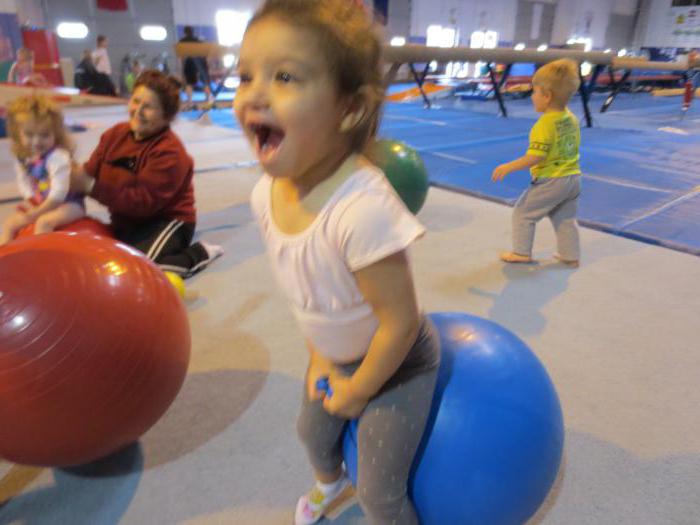
It is important that the equipment is in good working order and absolutely safe: it should not be heavy, have sharp corners, and break easily. Before the lesson, the educator must necessarily examine the health of the sports equipment.
How to make a set of exercises: helping a teacher
The lesson should be holistic, that is, have a general idea. As mentioned above, children of the younger group like storylines and games. Therefore, it is necessary to choose exercises according to the topic, giving each movement a play name.
For example, by choosing the "Cheerful Bear" storyline, during the warm-up phase, the teacher can suggest that the children imitate a bear's walk in the forest with different types of walking. Then, in the main part, continue the plot and do exercises "like a bear", and in conclusion, play an outdoor game "At a bear in the forest".
How to conduct classes in the warm season?
In terms of structure, gymnastics in summer is no different from exercise in the cold season. The only special feature is the venue - a sports ground or a pavilion in the courtyard of the kindergarten. In addition, it is important for the educator to select the intensity of the exercise depending on the ambient temperature. So, in cool weather, the load should be increased so that the children do not freeze, and in hot weather, it should be reduced to prevent overheating of the body. Summer gymnastics in the second junior group should contain more breathing exercises and outdoor games. In hot weather, it is recommended to carry out morning exercises in shorts and barefoot, thus performing a slight hardening of children.
What is “awakening gymnastics” in kindergarten?
An equally important activity that has a beneficial effect on the health of children is exercise after a nap, or, as it is commonly called in pedagogy, “awakening gymnastics,” in the second junior group and others. The purpose of this activity is to restore the tone of the body after sleep. Most of the exercises of this kind of charging are carried out directly in the beds. From a supine or stomach position, children perform simple movements: stretching, kneading, rolling.
A complex of 5-6 exercises is performed. The duration is no more than 5 minutes. Just as with morning exercises, it is recommended to carry out awakening gymnastics in a playful plot form.
What is finger gymnastics?
Another type of exercise for preschoolers is finger gymnastics in the second junior group. What is it? Direct kneading of the fingers. Why do children need it? The fact is that the connection between fine motor skills (that is, the coordinated work of fingers) and a person's speech, as well as his intellectual capabilities, has been scientifically proven. Therefore, in kindergarten, great attention is paid to finger gymnastics.
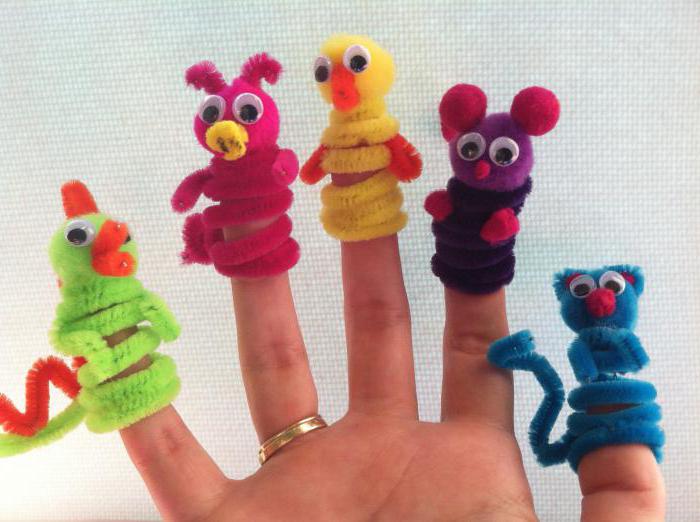
Finger gymnastics for children of the second junior group
Practically at every general developmental lesson, finger gymnastics is used in the second junior group or its elements. Just like any other exercise in kindergarten, finger warm-up is carried out in a playful way. They offer children rhymed gymnastics, "shadow theater", finger massage or puppet (on fingers) theater. In any case, this activity should bring children joy and interest, be easy to remember and reproduce, and also exceed 3 minutes in duration.
For example, this is how finger gymnastics "Transport" is carried out in the second junior group of a kindergarten:
Cars are driving along the road (imitation of a steering wheel).
A sound is heard as tires rubbing (palms and fingers are straightened, imitation of friction).
Don't run on the road (threaten with your index finger).
They will signal you "BBC" (imitate pressing the signal with the thumb).
What is articulatory gymnastics: goals, objectives, ways of implementation
Another entertaining type of gymnastics for children is articulatory. The name itself suggests that such activities are aimed at developing the work of the organs involved in the formation of speech. A qualified children's speech therapist has the right to carry out such gymnastics professionally and purposefully. But in order to prevent speech disorders, the teacher can also use such exercises as a minute of rest during the course of the planned lesson.
Articulation gymnastics in the second junior group should not exceed 3 minutes, consist of 2-3 exercises, and also be carried out in a playful way, be an unobtrusive entertaining moment in the process of educational activity.
Examples of
In the second junior group, you can offer articulatory gymnastics, imitation of animals. For example, the teacher asks the children to show how a puppy licks its nose with its tongue, how a hamster puffs out its cheeks, a cat licks milk, and a bird whistles a song.
In speech therapy practice in the second junior group such exercises as "We brush our teeth with our tongue", "Drum", "Turkey", "Swing" and others are used.
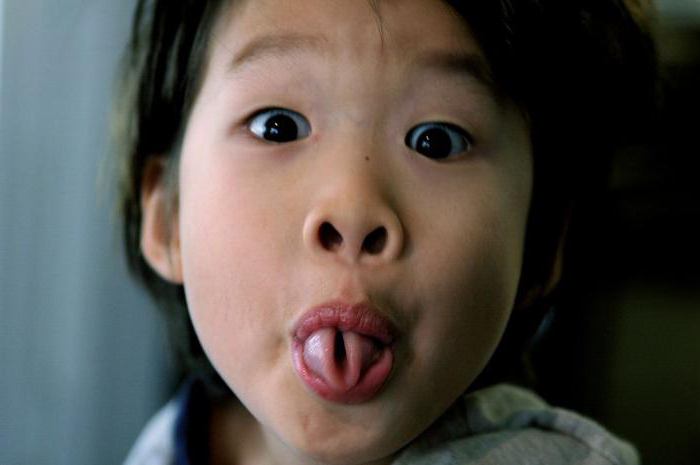
Carrying out morning exercises in the second junior group of kindergarten, as well as other types of exercises, is an important component of the all-round development of kids. Such classes not only improve the physical performance and capabilities of children, but also are a means of socialization, adaptation in a team of young pupils. And, in addition, they contribute to ensuring motivation, establishing communication and simply a positive attitude of children in a preschool institution.
